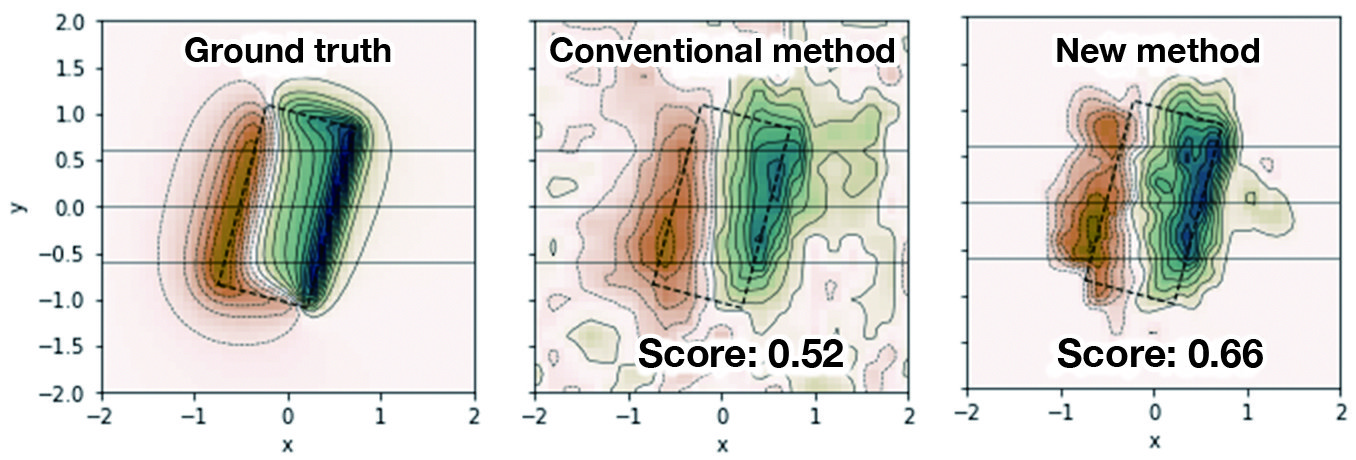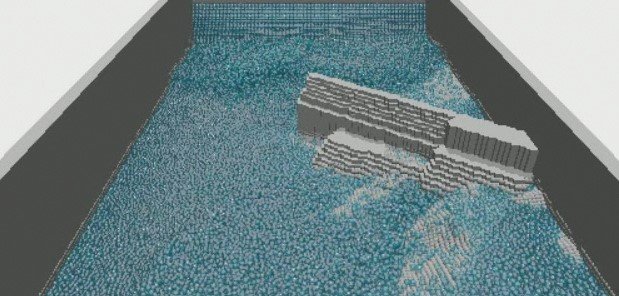Major Research 1B Research on Mitigation and Restoration of Tsunami Disasters
Background and Objectives
Since the Great East Japan Earthquake in 2011, we have studied stable structures against tsunami overflows and developed a numerical simulation model to predict the drifting of debris generated by the destruction of buildings. However, complex behaviors of tsunami run-up on land and the resulting damages are not fully understood and modeled yet. In addition, regarding a technique for real-time inundation forecast, which is expected to be utilized for evacuation and other purposes, only data from GPS-mounted wave buoys is used; other valuable data is not fully utilized yet.
Therefore, we are aimed for changing disaster prevention and reduction countermeasures into a pre-disaster stage from post-disaster one, and will conduct research to establish resilient coastal zones which can withstand the most severe tsunamis, i.e., to protect lives against the most severe tsunami, to avoid catastrophic socioeconomic damages, and to enable early recovery and reconstruction.
Research Topics
Research and development comprises the following two subthemes:
- Research on ICT-based decision support systems
We have previously developed a system for rapid forecasting of tsunami inundation, which utilizes offshore-tsunami waveforms observed by GPS-mounted wave buoys. For highly reliable tsunami prediction, we will additionally utilize ground deformation data obtained by on-land GPS base stations and remote-sensing information including ocean HF radars, and will refine the system. To ensure the safety of evacuation sites, it is necessary to assess not only tsunami-induced inundation depth but also the tsunami velocity and floating objects to determine the resistance of structures and even to assess fires, which are associated with floating objects. So, we establish an integrated simulation system which can assess these risks. - Research on the development of tsunami-resistant ports
We will clarify the structures of violent flows, scours around structures induced by large tsunami-overflows, and the influence of drifting objects including ships and vessels on the damages. Then, we will develop a method of designing tsunami-resistant breakwaters and other facilities as well as a method of planning tsunami-resistant ports. We will also develop a 3-D multiphysics numeric calculation model that incorporates novel calculation methods such as particle methods and that can perform computations while considering both fluids and solids as one, to be used as a new design and planning tool, in addition to the numeric calculation models that were previously developed. Moreover, we will conduct a large-scale model experiment to validate the robustness and accuracy of the numerical model, and will understand complex tsunami phenomena in port cities.
Activities in FY 2019
As for the development of a 3-D simulation model for drift behavior and its application to a 2-D simulation model, we conducted the experiments on drift objects in a coastal area including a port and studied the methods of coupling the fluid model and drift object model that are integrated in the 3-D simulation model. In these experiments, we acquired 3-D data using acceleration sensors embedded in drift objects of various shapes and analyzed plane behavior of the drift objects by image analysis.
Aiming to build a multi-observation based tsunami forecasting method, we developed a new tsunami source inversion method that utilizes data-driven bases created by time-reversal imaging, which improved the accuracy of the tsunami source estimation by 14%. In addition, we succeeded in developing a reciprocal-theorem-based technique that reduced the cost of calculating Green's functions, which is necessary for the tsunami source estimation, to approximately 1/100. These new technological inventions allow us to perform the tsunami source analyses with ultrahigh resolution, which are expected to improve the accuracy of tsunami waveform prediction.

Comparison of accuracy in rectangular fault tsunami source estimation between the conventional and new methods
Regarding the development of a method for estimating local scour that a tsunami causes around structures, we conducted large-scale hydraulic experiments and performed numerical calculations on local scour that occurs near the breakwater head, and identified the characteristics of the large eddy that occurs around the head. In addition, we conducted experiments on the scour that occurs behind the breakwater due to tsunami overflow and clarified that the rubble mound suppresses overflow-induced scour.
Concerning the application of particle methods to tsunami-induced large deformation of port structures, we developed the multi-physics model based on the Discrete Element Method and a porous model to simulate the behavior of various rigid objects, e.g. mounds, blocks, caissons. In addition, we have developed a novel wave-generation model that considers the incident wave height as the only parameter and built a framework in which the model can be easily connected to 2-D planar simulation models.

(2-D simulation)

(3-D simulation)
Analysis of flow around breakwater in a numerical wave tank utilizing the particle method



